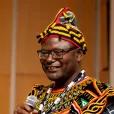Finland
Learn more about Finland, one of the destinations for U.S. educators through the Fulbright Distinguished Awards in Teaching Research Program.
3 to 6 months
Finland
None
60.192059, 24.945831
Placement Information
- Partner Organization: Fulbright Finland Foundation
- Eligible Program Dates: 3-6 months, with a start date between January 7-15, 2026
- Host Institution Expectations: Applicants should keep an open mind about their placement with Finnish host universities. The Fulbright Finland Foundation works with various Finnish higher education institutions to identify appropriate host universities for selected U.S. teachers.
- Language Requirement: None.
- Monthly Allowance: $3,950 - $4,250 (exact amount to be confirmed at a later date)
Dependent Information: An allowance of $2,000 per eligible dependent will be provided as part of the grant. Guidance will be provided to teachers traveling to Finland with school-aged children, or younger children requiring daycare placement. Please note that whereas the public schools run by the municipalities do not charge fees, private foreign language schools may charge tuition. Typically, U.S. Fulbright grantees’ children attend public schools. Daycare options and fees vary by municipality.
If you have family members accompanying you to Finland, please read carefully the family related advice and tips from the Fulbright Finland Foundation's Orientation Guide. Please note that tuition support for dependents is subject to availability and requests for funding are reviewed on a case-by-case basis. Applicants are strongly encouraged to research schooling options for their dependents during the application phase.
Country Overview
ThisisFINLAND is Finland's official public relations page and includes facts on Finnish geography, history, people and economy among other topics. Below are additional sources on Finnish history:
- Main Outlines of Finnish History
- Finnish History for Self-Studies
- A Guide to Finnish Customs and Manners
- Visit Finland (Official Finland Travel Guide)
- Fulbright Finland Foundation's Guide to Coming to Finland
If you want to read more about Finnish society and culture, here are some book recommendations:
- Richard Lewis: Finland, Cultural Lone Wolf
- Anu Partanen: The Nordic Theory of Everything
- Karoliina Korhonen: Finnish Nightmares
- Michael Booth: The Almost Nearly Perfect People
Educational System Overview
The Finnish education system is composed of:
- Early childhood education and care which is provided for children before compulsory education begins.
- Pre-primary education which is provided for children in the year preceding the beginning of compulsory education.
- Nine-year basic education (comprehensive school).
- Upper secondary education, which is either general upper secondary education or vocational education and training.
- Higher education provided by universities and universities of applied sciences.
- Adult education (available at all levels).
Education from pre-primary to higher education is free of charge. The main objective of Finnish education policy is to offer all citizens equal opportunities to receive education. The structure of the system reflects these principles, and there are no dead-ends preventing progression to higher levels of education. The focus in education is on learning rather than testing. There are no national tests for students in basic education. Instead, teachers are responsible for assessment in their respective subjects on the basis of the objectives included in the curriculum. The only national examination, the matriculation examination, is held at the end of general upper secondary education. Commonly, admission to higher education is based on the results in the matriculation examination and entrance exams.
Possible Topics of Interest for U.S. Educators
- Environmental and sustainability education in Finland raises students’ awareness of ecosystems and climate change, while promoting hope, personal relationships with nature, and the role of active citizenship in sustainable development.
- The Finnish National STEM Strategy and Action Plan for 2023-2030 lays out measures for developing teaching and education in STEM subjects at all levels of education, e.g. by promoting cooperation between high schools and higher education institutions and creating incentives for studying STEM subjects while promoting equality and non-discrimination.
- In Finland, media literacy is integrated into the national core curricula at all levels of education starting in pre-school, and it is embedded in the day-to-day activities of schools across all subjects.
- Vocational upper secondary education responds to the changing needs of the labor market and provides flexible study paths for students to pursue further studies and competencies to enter the job market.
- Supporting language learners and cultural awareness.
- Supporting student wellbeing.



